
2008 BODYSUITS – EVIDENCE OF A HOAX?
Brent S. Rushall, Ph.D.,R.Psy.
San Diego State University
©Sports Science Associates
Spring Valley, California
Revised: August 16, 2008

This web site supplements the information contained in the 2008 Bodysuits – Déjà Vu? article. It is recommended that the viewer read that article first. This article mainly displays visual evidence of the interaction of bodysuits with water when elite swimmers perform maximally in races. Hopefully, the reader will be sensitized to some of the difficulties and problems that surround the use of this form of equipment in competitive swimming.
Surface resistance created by the bodysuit can be seen as "milky" or "whitish" areas on top of the background suit. The change in clarity is caused by the surface resistance of the suit's material causing turbulence which, when in the right light, causes that light to diffuse (be disturbed) and become white light.
Some questions raised by this presentation are:
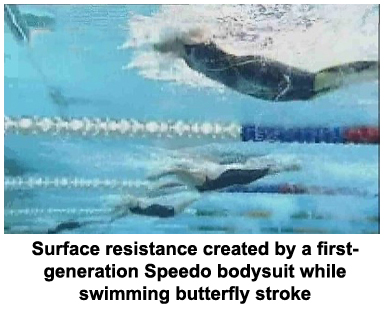
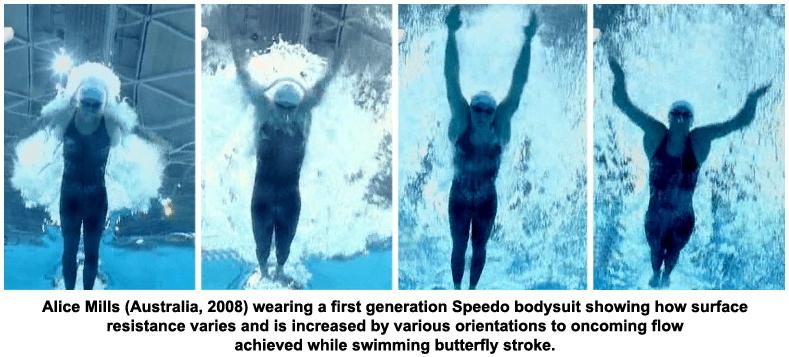
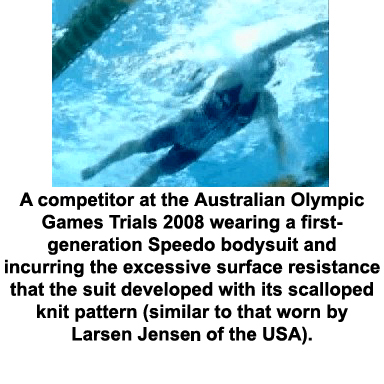
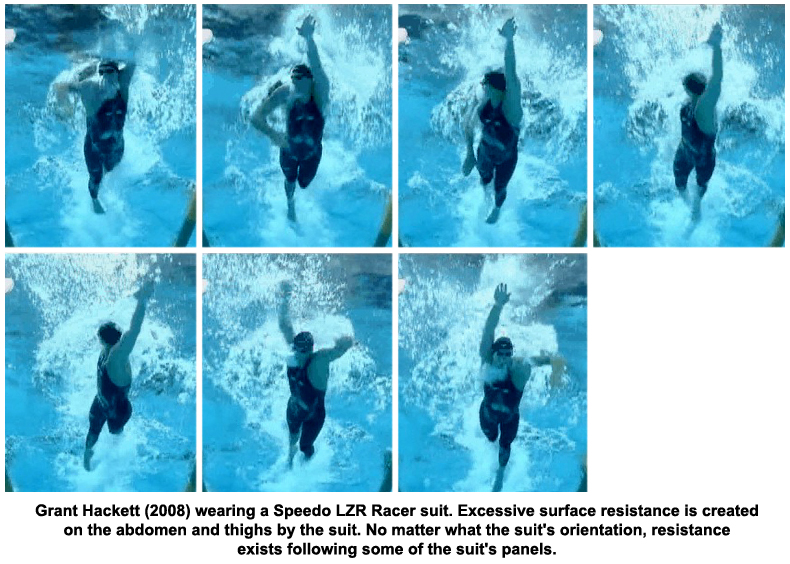
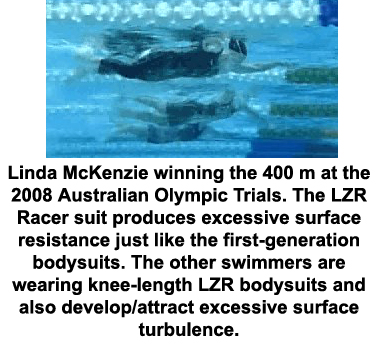
Observations from the USA Swimming Trials (June 29 – July 6). At the USA Olympic Games Swimming Trials in Omaha, Nebraska, when a men's world-record was established, the second place getter as well as the winner in all events wore the Speedo hips-to-ankle suits. The record-setters were Michael Phelps (200 and 400 Individual Medley) and Aaron Peirsol (100 and 200 Backstroke). The third and fourth place getters in the four events wore Speedo neck-to-ankle suits and that included some who were event favorites or fastest qualifiers. The world-records were set with more exposed skin than covered skin, with the coverage on that part of the swimmer that is largely in turbulent water, which means the suits would have virtually no chance of effect (either positive or negative). This observation gives some support to the contention that artificial coverage is detrimental to progress efficiency.
A disturbing feature was that even great swimmers such as Phelps and Peirsol still covered the lower legs. It was remarkable to see Brenden Hansen swim with covered lower legs when it has been known since the inception of bodysuits that covering the shanks is disadvantageous for breaststroke swimming.
August 9, 2008. Grant Hackett's blunder of Olympic proportions. Grant Hackett elected to wear a complete Speedo bodysuit in the final of the 400m freestyle at the 2008 Olympic Games. The suit was not worn in the heat. Hackett swam slower in the final than in the heat and slower than the time he did to win the Australian Olympic Games Trials. There are a number of unfathomable decisions and detrimental features of this swim. After Kieran Perkins' distatrous choice of a total bodysuit in 2000 in the 1,500 m final one would have thought the lesson would have been obvious. However, here is a similar decision displayed again. The suit worn by Hackett exhibited more surface resistance than any other suit or swimmer sequence on this web site. If a similar apparel decision is made in the 1,500 m in these Games, Grant Hackett will not even medal.
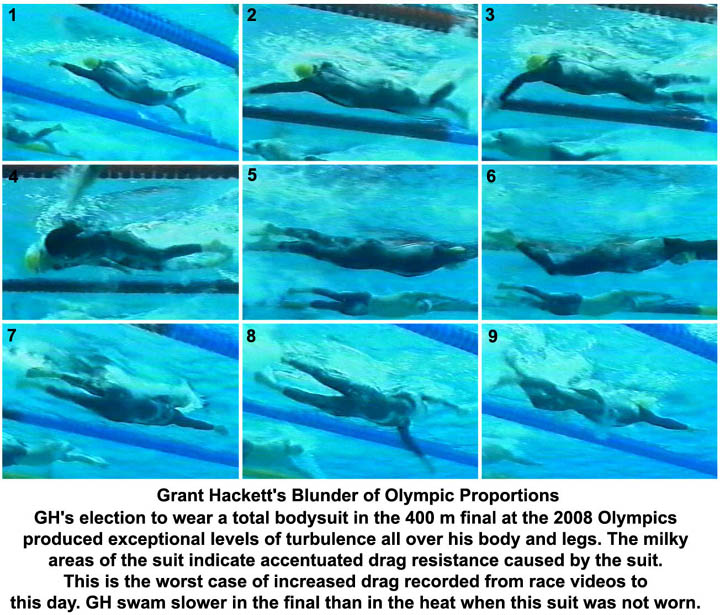
August 16, 2008 – Michael Phelps' Choice of Suits. Michael Phelps swam all his Olympic races, except in crawl stroke, in waist-to-ankles suits. In crawl stroke, the full LZR Racer bodysuit was worn. The following picture of stages of his underwater double-leg kicking action, shows the torso section of the full bodysuit with an increased amount of turbulent flow across the diaphragm region. The whitish areas within the highlighted regions are areas of increased friction. However, in those areas are also some white patches from the bodysuit design. It is hypothesized that despite the white pattern, the extent of turbulence includes the patterned as well as non-patterned surface.
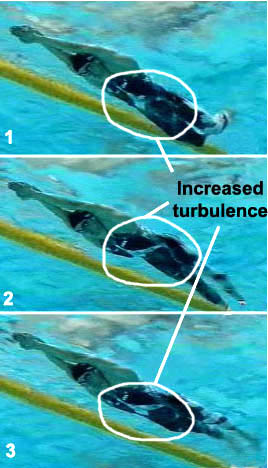
Return to Table of Contents for The Bodysuit Problem.
